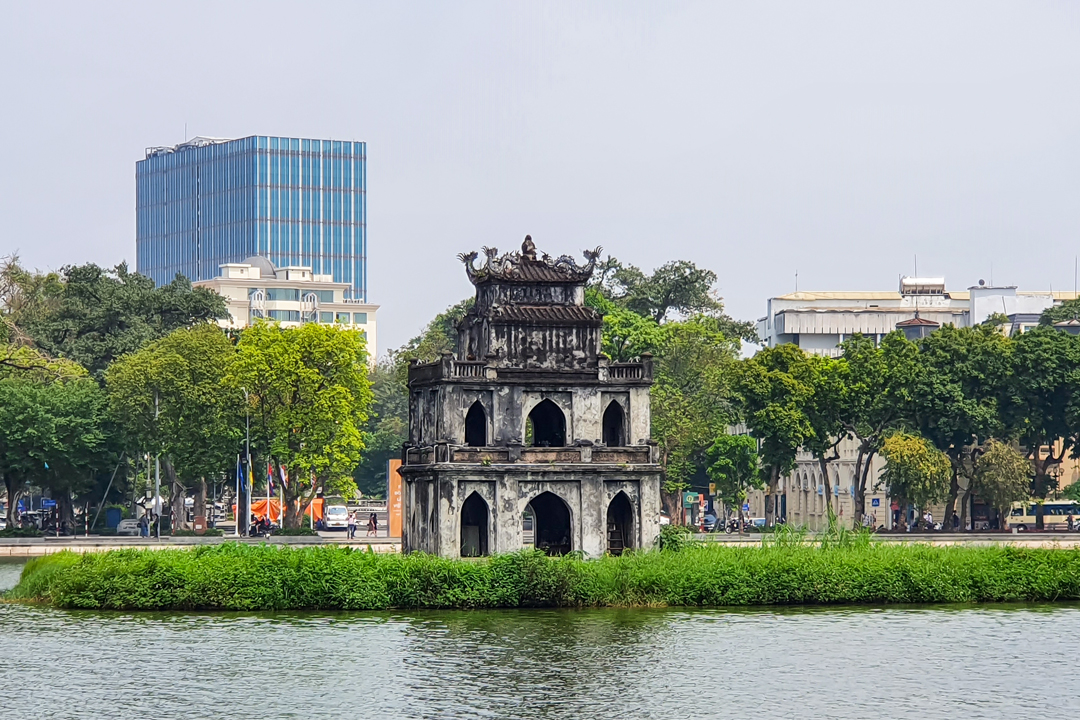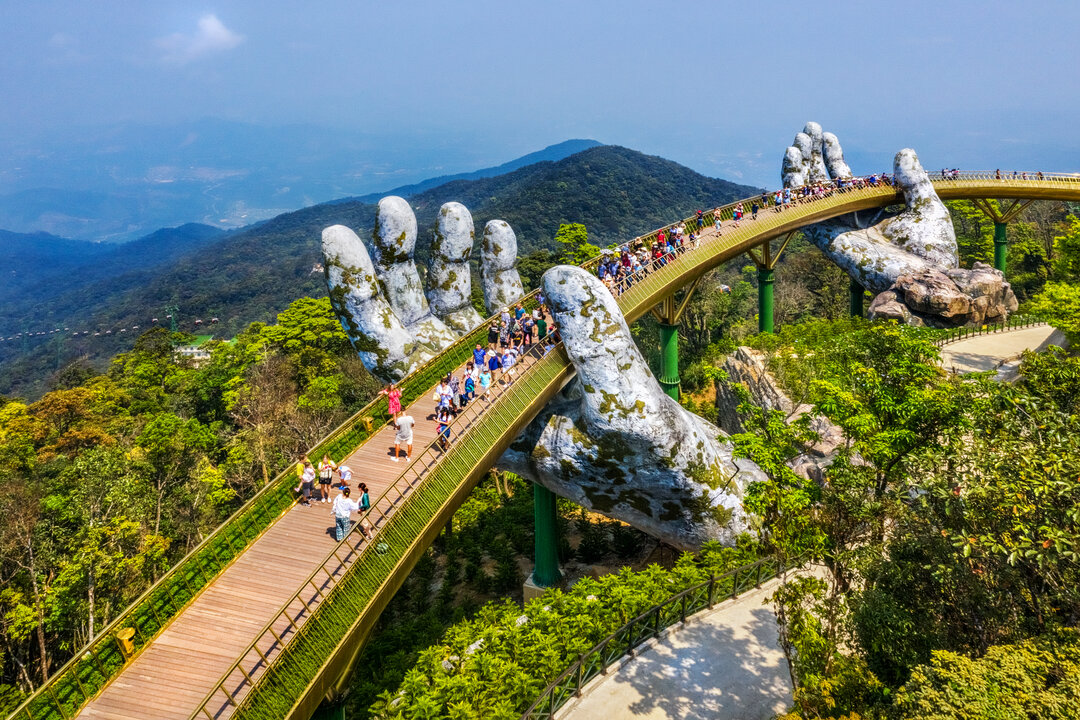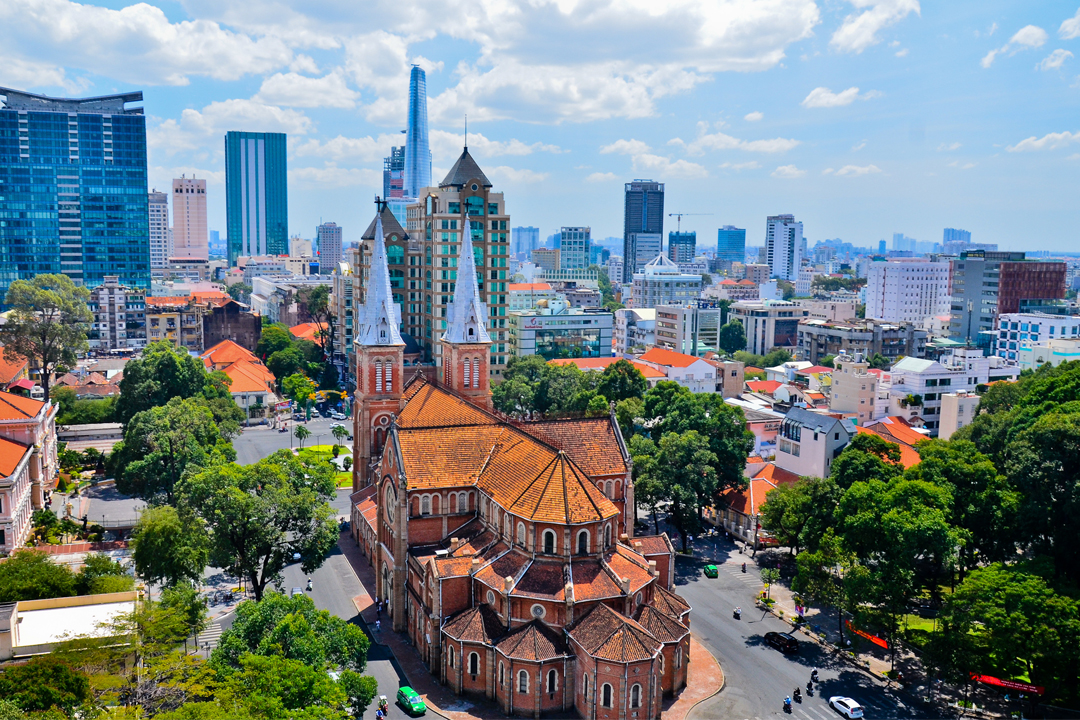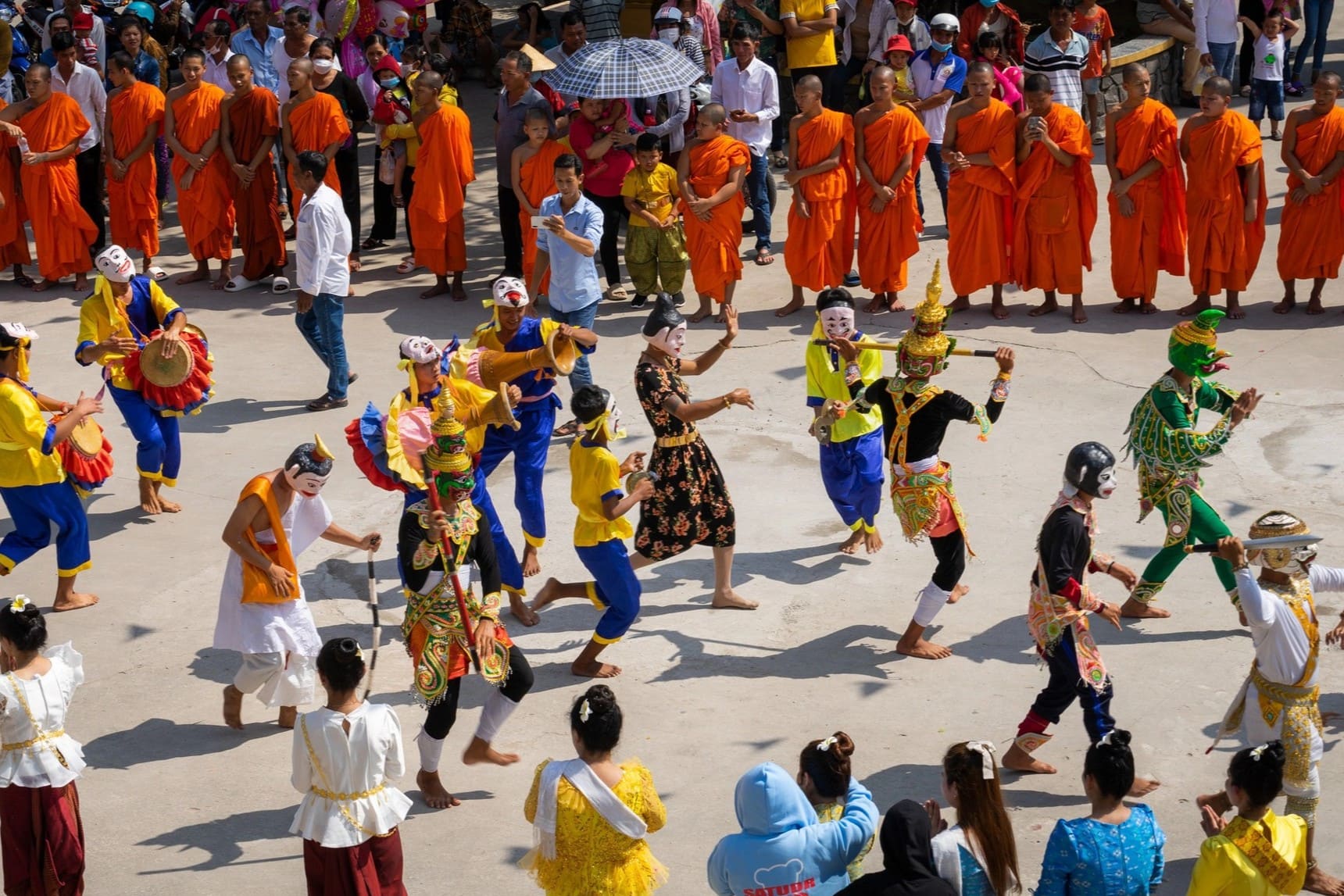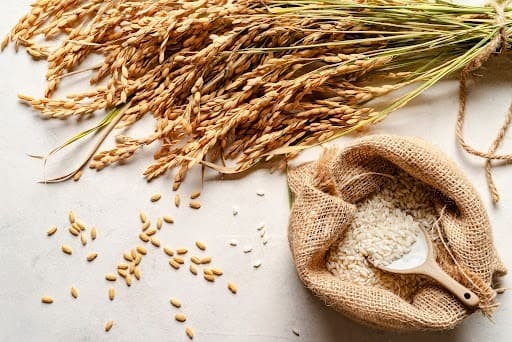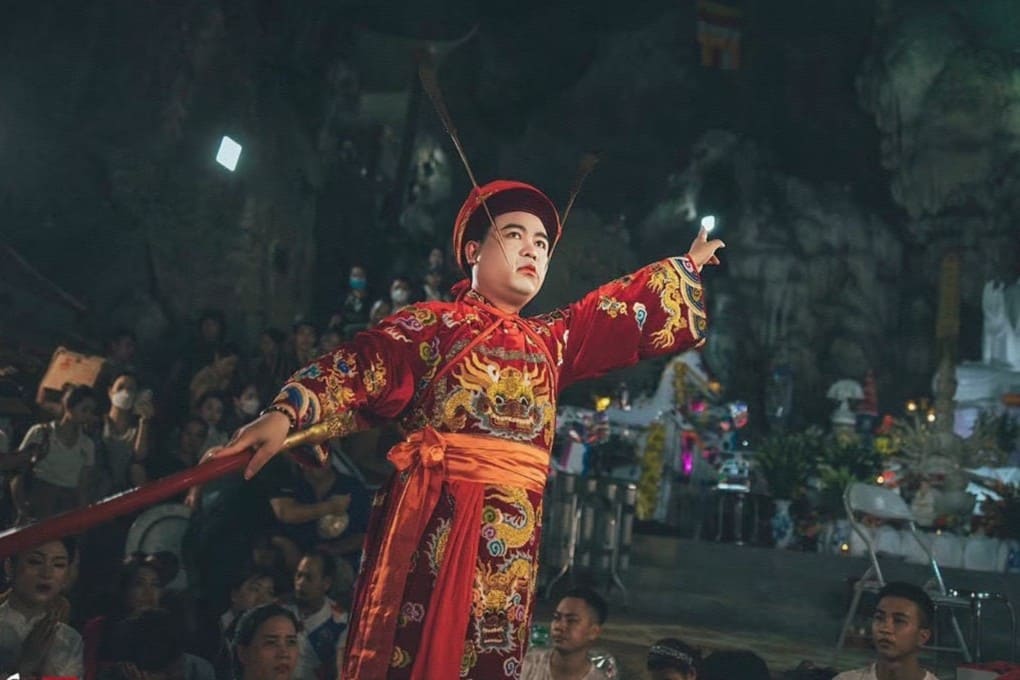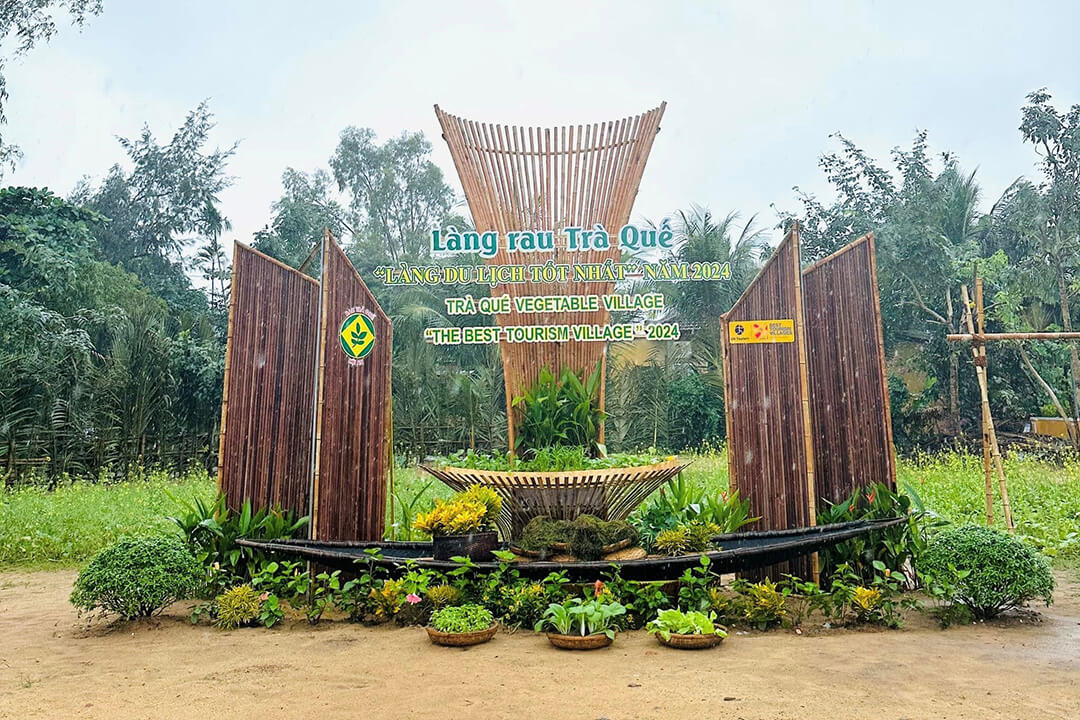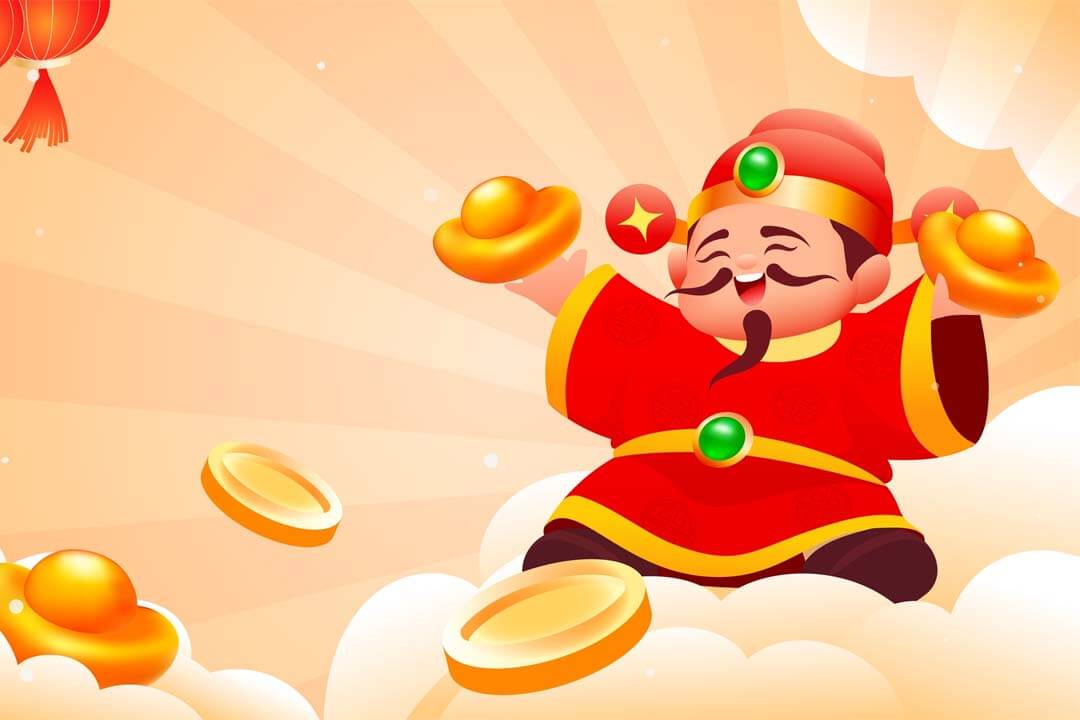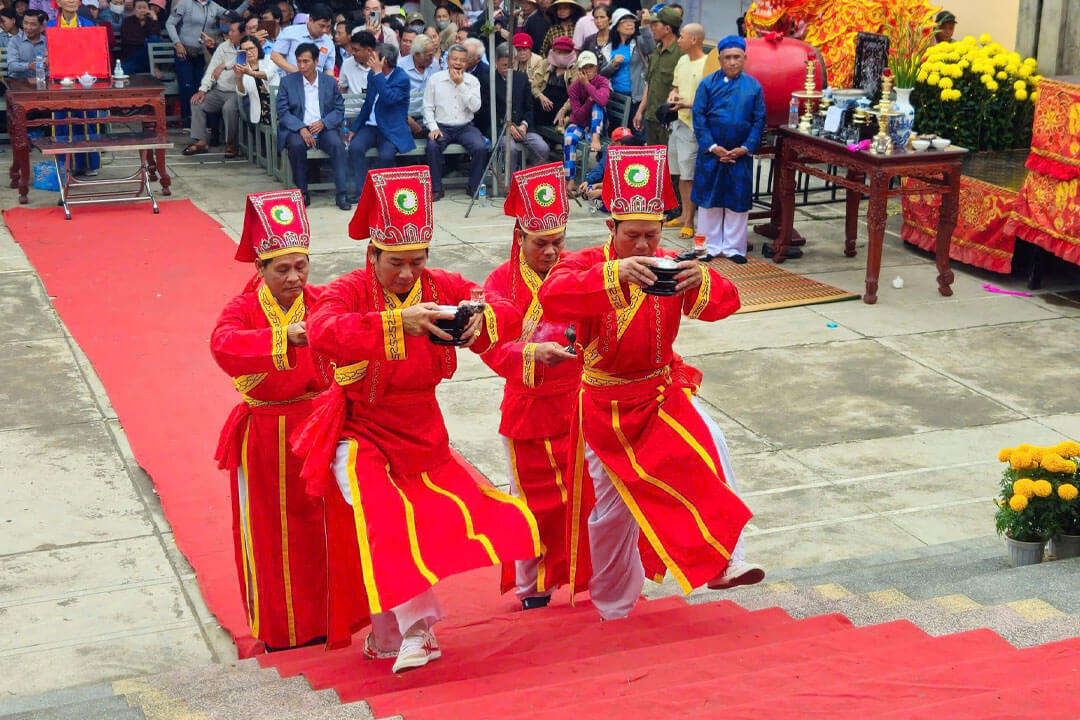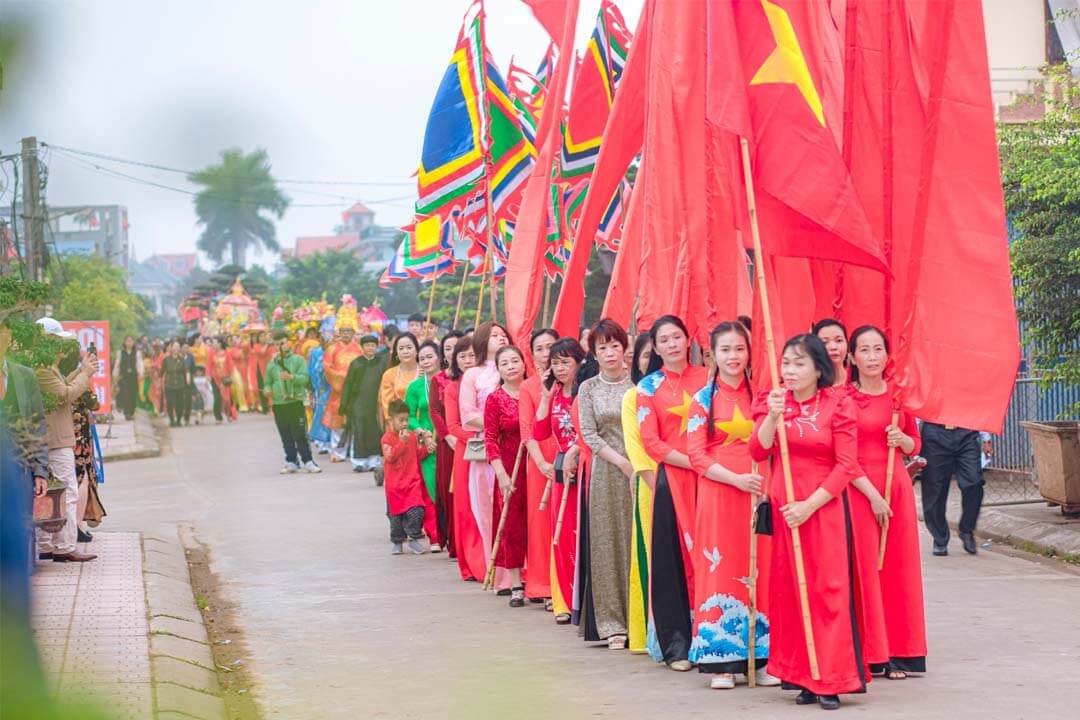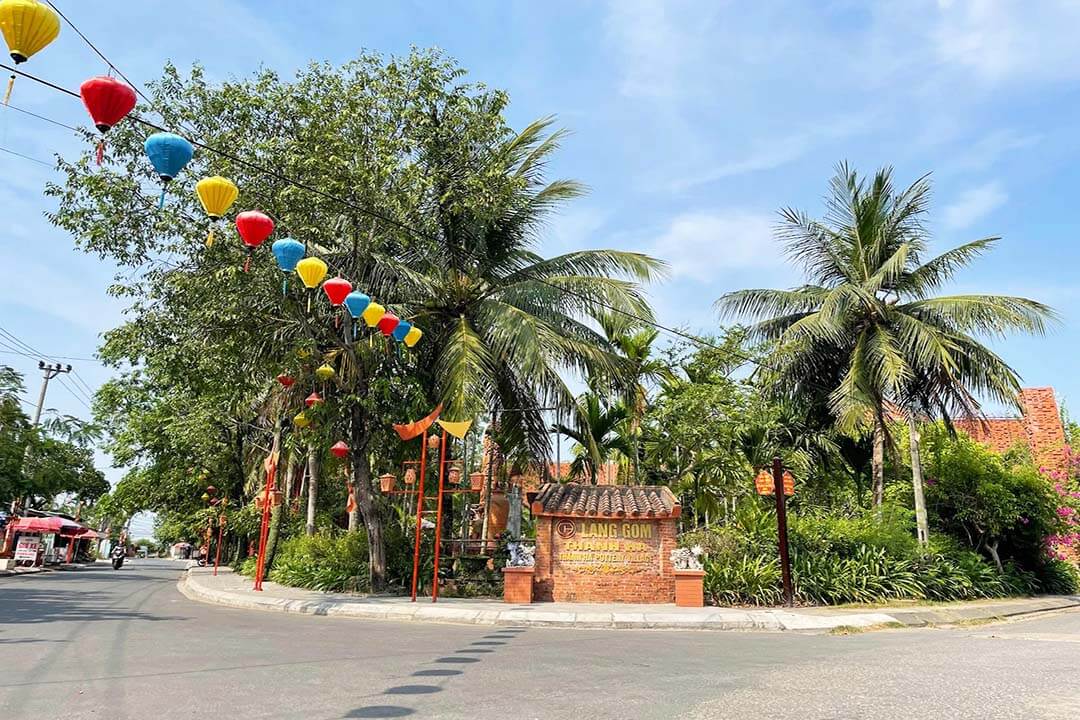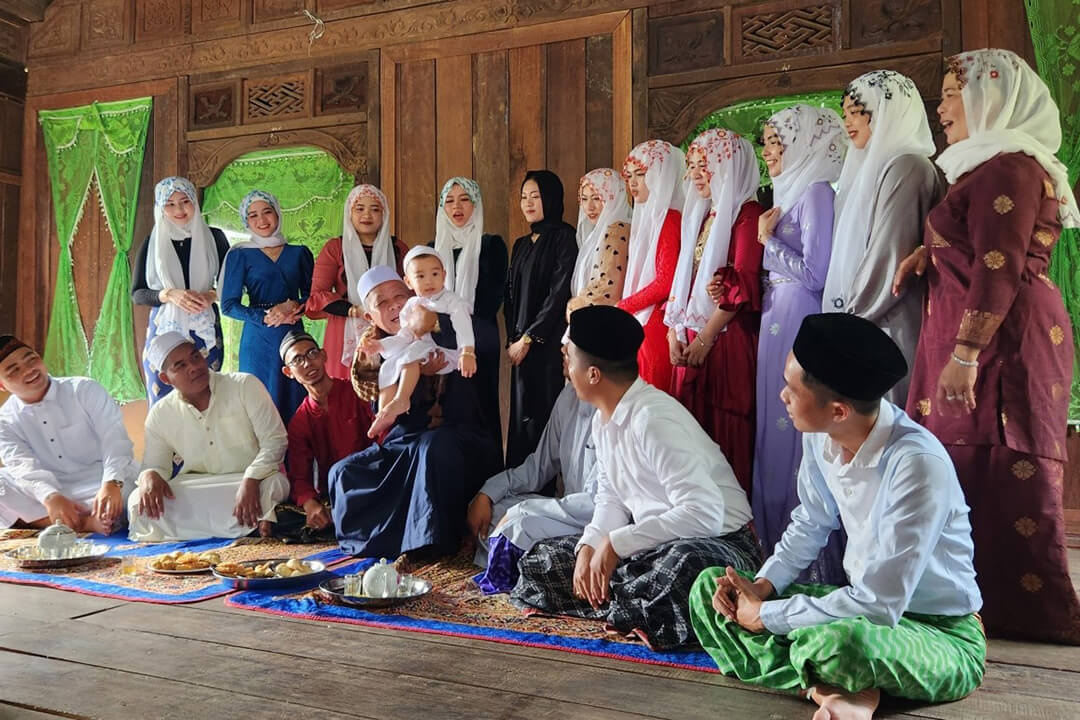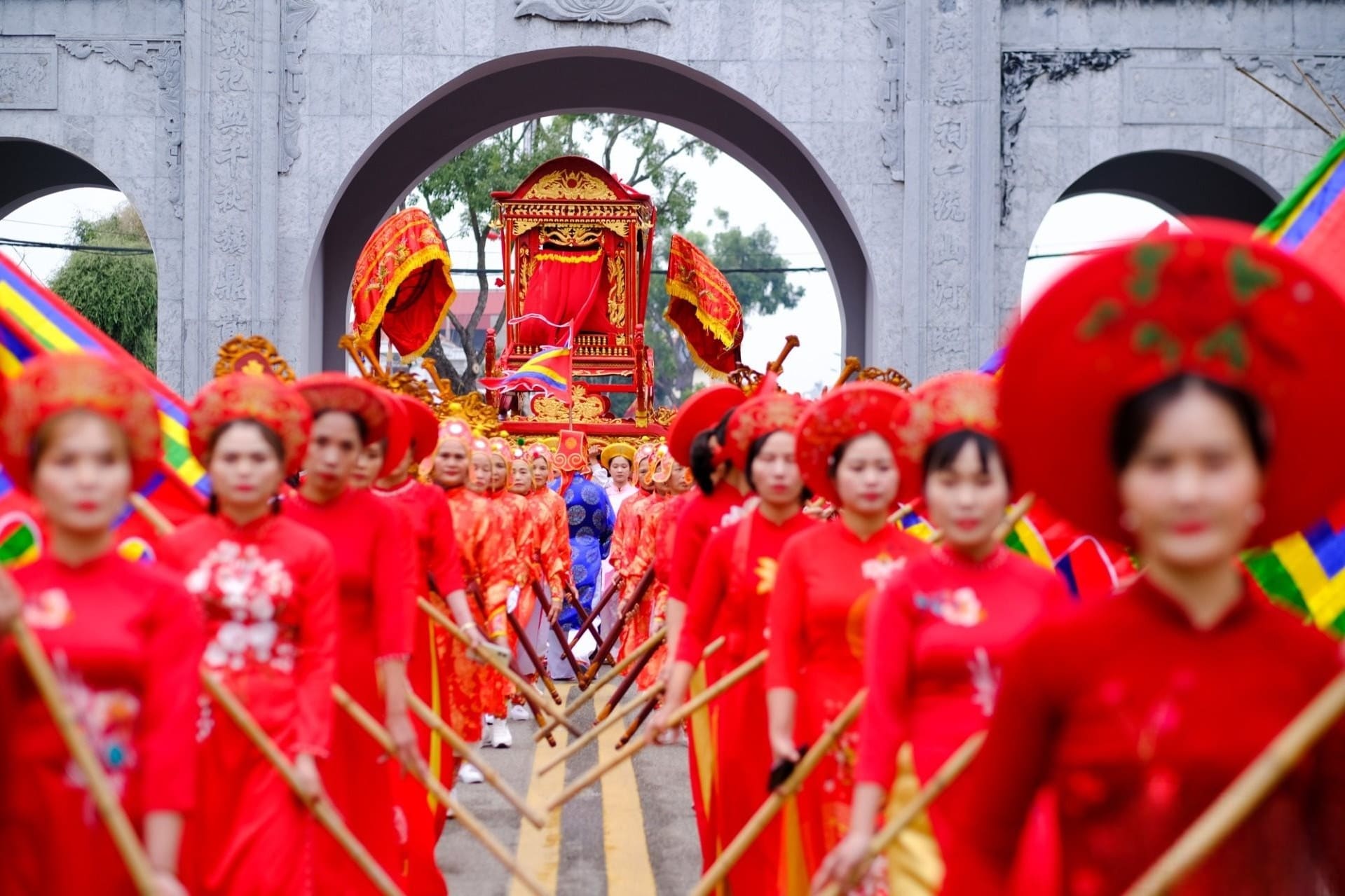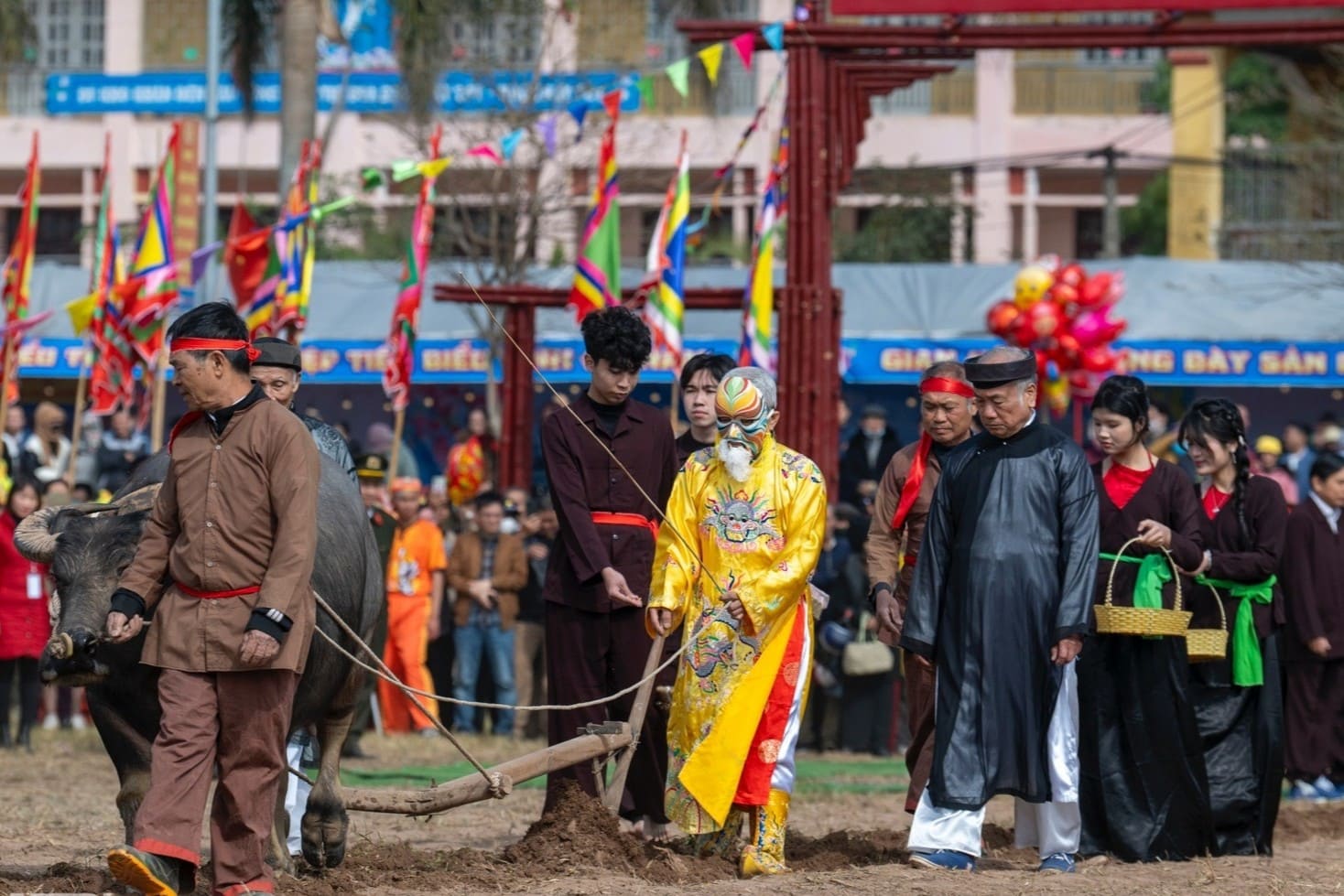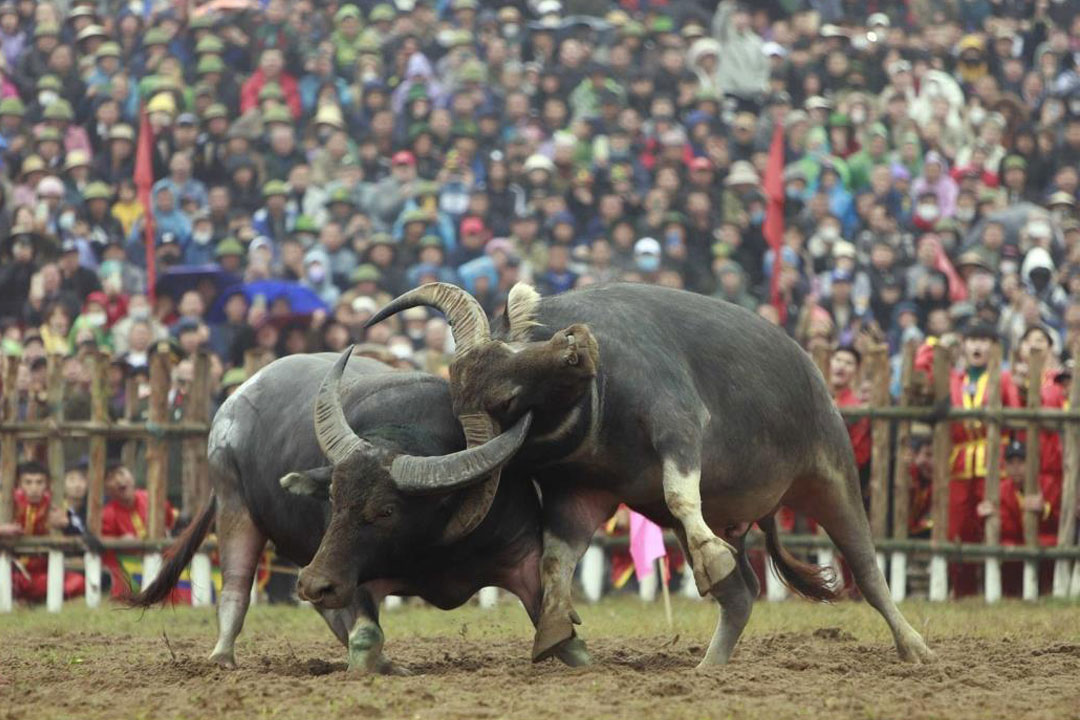Jul - 30 - 2025
Hue Fishing Festival is a unique and deeply spiritual celebration held by coastal communities in Thai Duong Ha Village, Hue. With over 500 years of history, this festival honors the village’s tutelary deity and ancestors, praying for favorable weather and safe, prosperous fishing trips for local fishermen. It’s a captivating cultural experience that showcases the rich maritime heritage of central Vietnam.
The origin story of Hue's Fishing Festival
According to local legend, the area now known as Thai Duong and Thai Duong Ha was once a single village called Thai Duong Thuong Ha. After a great flood in 1897, a new estuary named Cua Sut opened, dividing the original village into two parts. This significant event also gave rise to the two present-day villages and the evolution of their own local identities.
The tutelary deity of both villages is Truong Quy Cong, a revered ancestor who was credited with founding the village and teaching locals how to fish and trade by boat. In his honor, the villagers began the Fishing Festival (Cau Ngu Festival), a large-scale ceremony that takes place every three years.
Although many rituals occur before dawn, the festival still draws large crowds of villagers and travelers. The early morning darkness is filled with ceremonial drums, incense, and a festive atmosphere that captures the spirit of a coastal people honoring their roots while embracing the future.
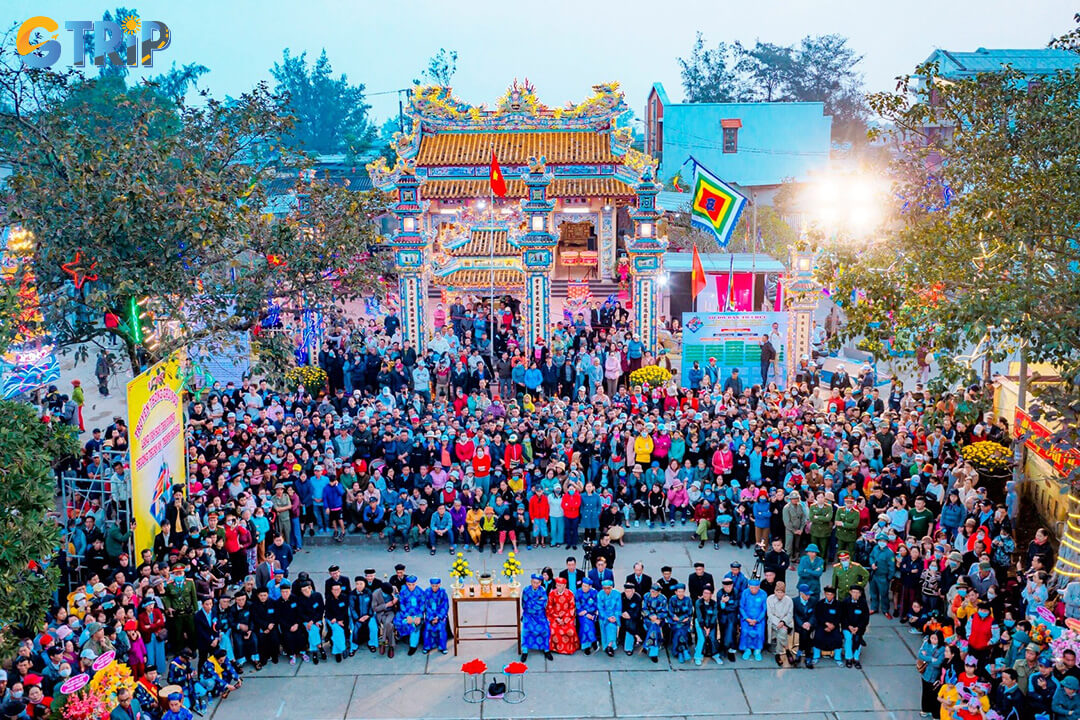
Every three years, the fishing festival in Thai Duong will be held
Unique features of Cau Ngu Festival in Hue
Held on the 11th and 12th days of the first lunar month, the Fishing Festival is a major cultural event for coastal communities, featuring both solemn rituals and lively folk performances.
The Main Cau Ngu Ceremony
The preparations begin the night before the main festival, when Thuong and Ha ward hold offerings to the deities. Late at night, a sacred “peace and fishing” ritual is held. A respected elder, skilled in ceremonial practices, leads the prayer and offering. All boat owners dressed in traditional black tunics, white trousers, and red headbands line up to make offerings.
Each house in the village sets up an altar with ritual items, while boats are decorated with lanterns and flowers. The main ceremony starts around 2:00 AM on the 12th day, featuring a ceremonial reading to invoke the sea gods for blessings of peace, calm seas, and abundant harvests. By 4:00 AM, the ceremony ends, giving way to the festive part of the celebration.
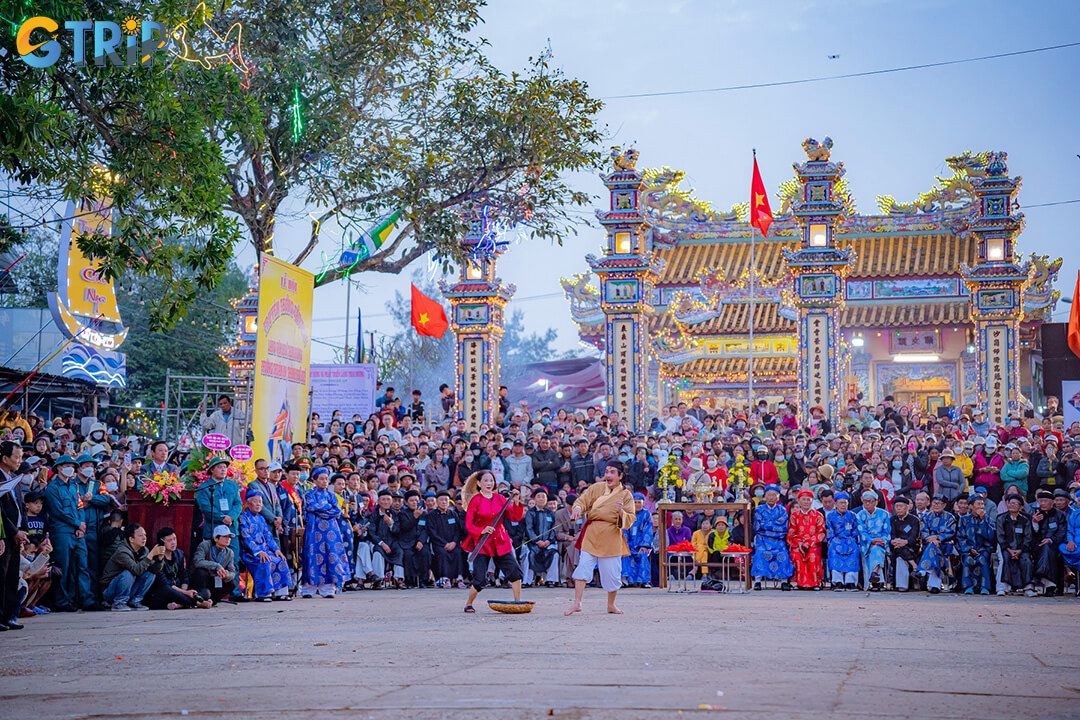
Before the main ceremony, village elders light incense and pray for the health of the village's children and safe voyages
Profession reenactment rituals
One of the most captivating traditions of the Fishing Festival is the ritual reenactment of fishing activities. This unique element honors Truong Quy Cong and symbolizes the heritage of the village.
The reenactment begins with a series of drum beats signaling the start of the ritual. Young men dressed as fishermen cast symbolic nets, while children playing the roles of fish playfully try to escape. A bamboo fishing boat, painted red and carrying a “captain”, circles the “school of fish”. The net gradually closes in until one “fisherman” jumps in and catches the largest symbolic "fish". This is offered to the village deity at the communal temple.
The performance continues with simulated "fish" market scenes. Some “fish” are carried in traditional bamboo baskets to be “washed” in seawater. Others are “sold” at the village market in a lively mock auction with bargaining women. After “selling”, the fishermen gather to divide their earnings in front of the temple, adding humor and realism to the festival.
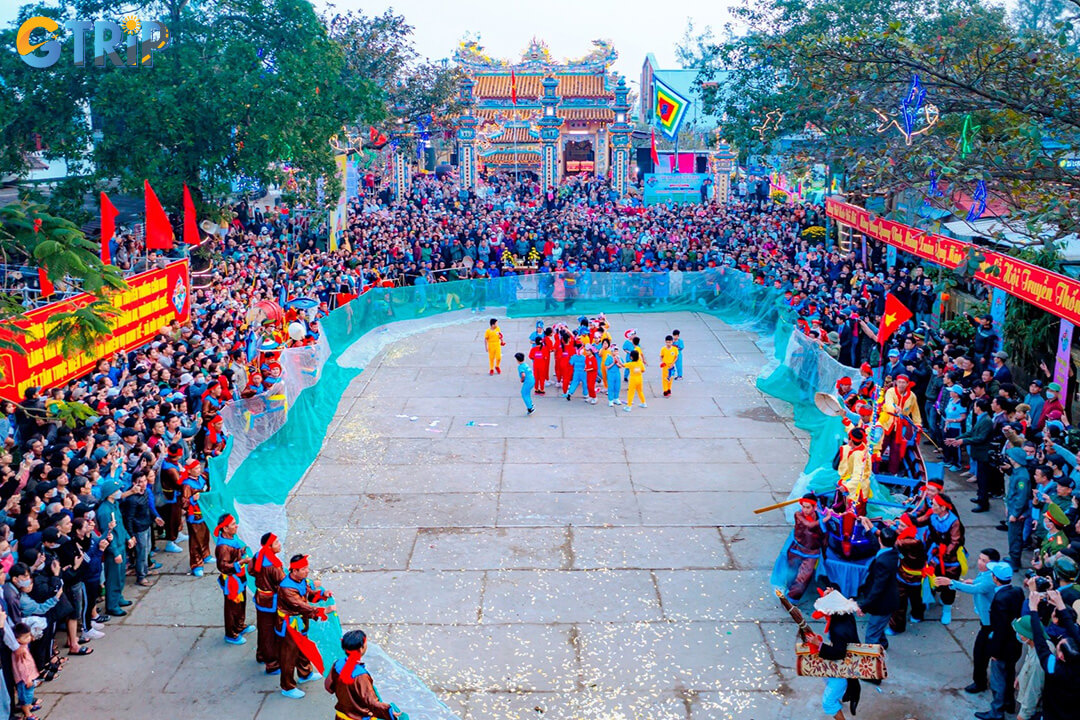
The performance takes place at the Fishing Festival in Thai Duong Village
Lively festive activities
The festival's lively activities include onshore performances, traditional boat races, and the ceremonial launch of the fishing fleet for the new season. The highlight is the Tam Giang lagoon "trai" boat race. This symbolizes wishes for abundant fish and rice harvests, embodying local hopes for a prosperous and fulfilling year.
The racing boats, called trai, are made from three long wooden planks and accommodate 14 rowers. Each boat features a bow paddler, a steerer, and six pairs of rowers seated in two rows. About six or seven boats typically compete, each representing different village groups.
The races consist of multiple rounds, with ritual prizes such as betel, areca, and wine offered to the winning crews. Other awards include symbolic red silk sashes and cash prizes. The event concludes in the late afternoon after the final race. It marked the end of a jubilant spring festival and the beginning of a new fishing season full of promise and hard work.
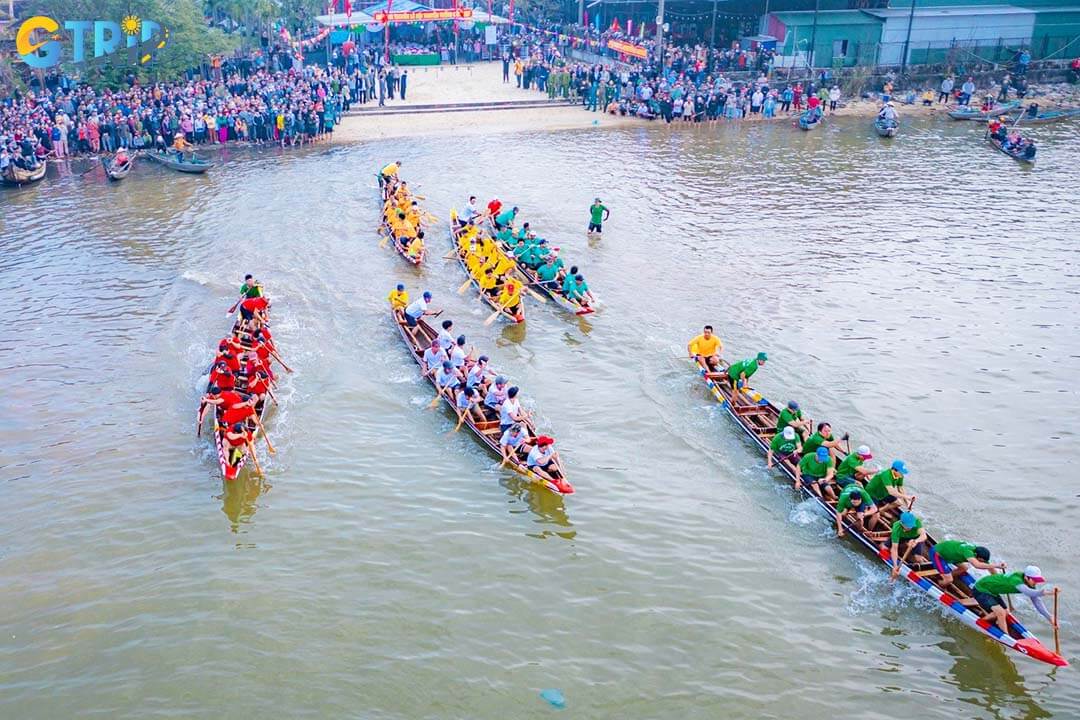
During this festival, the fishing community prays for calm seas and abundant catches of shrimp and fish
Fishing Festival in Hue is a unique coastal celebration that beautifully blends ancient rituals with community festivities. Held once every three years, this traditional event has become an essential part of Hue’s spiritual and coastal cultural identity. If you’re planning a visit to Vietnam in spring, make sure to experience this festival and immerse yourself in the color, rhythm, and culture of life by the sea.

